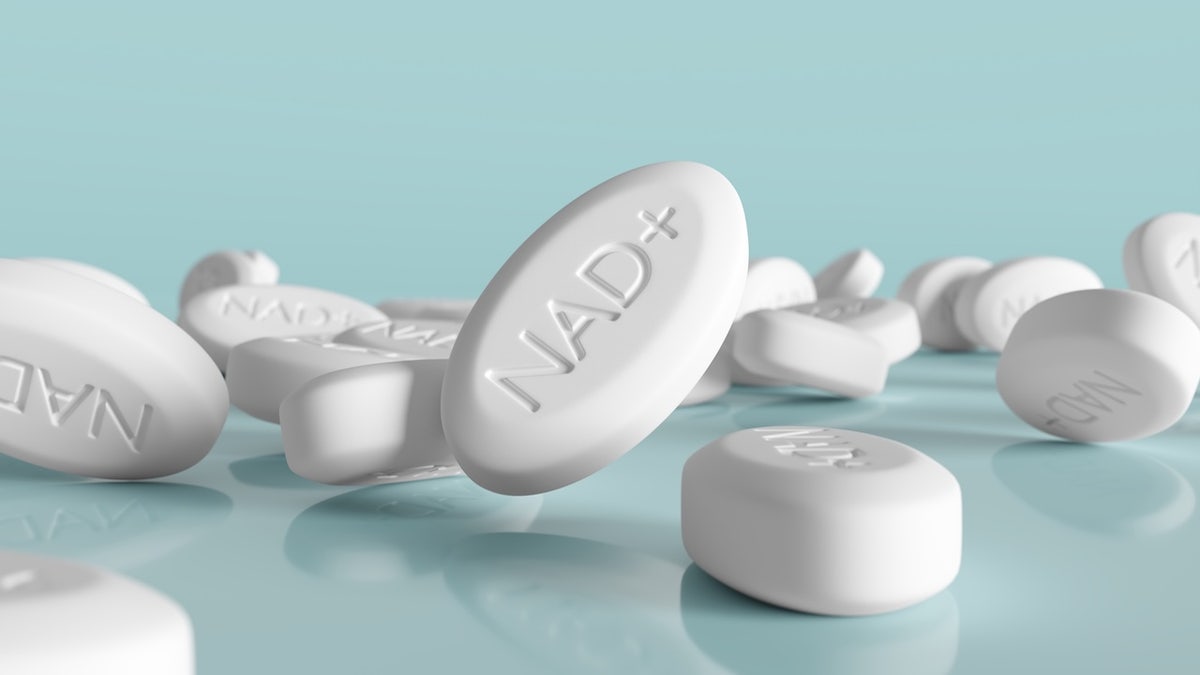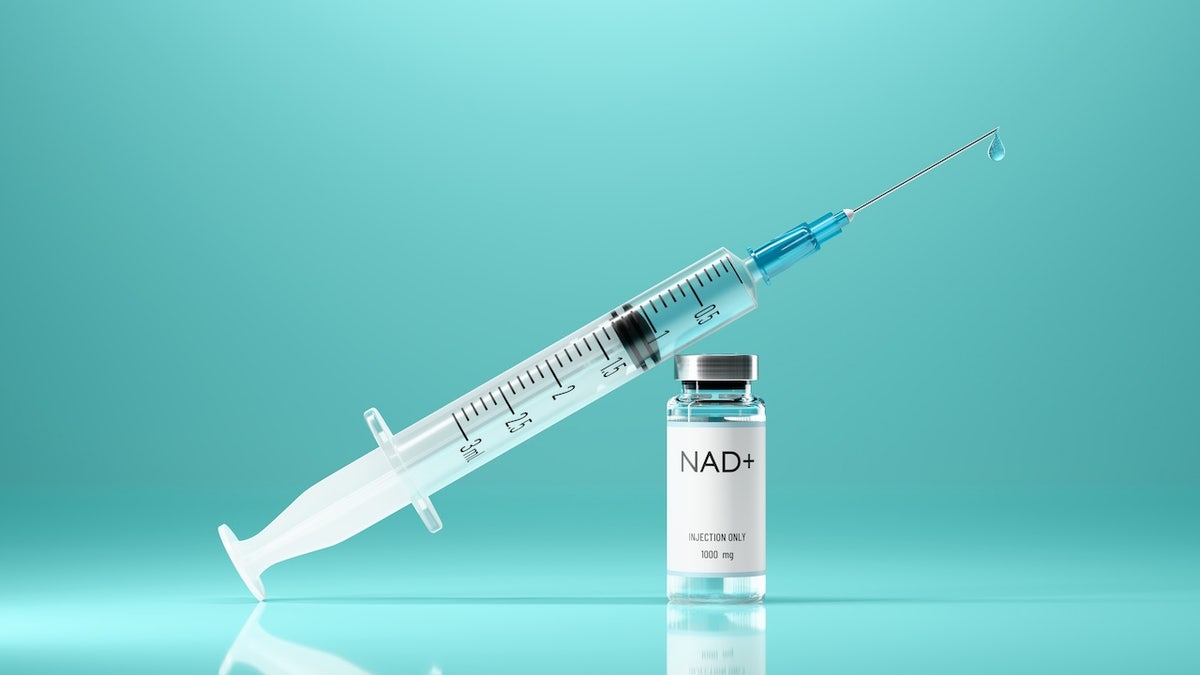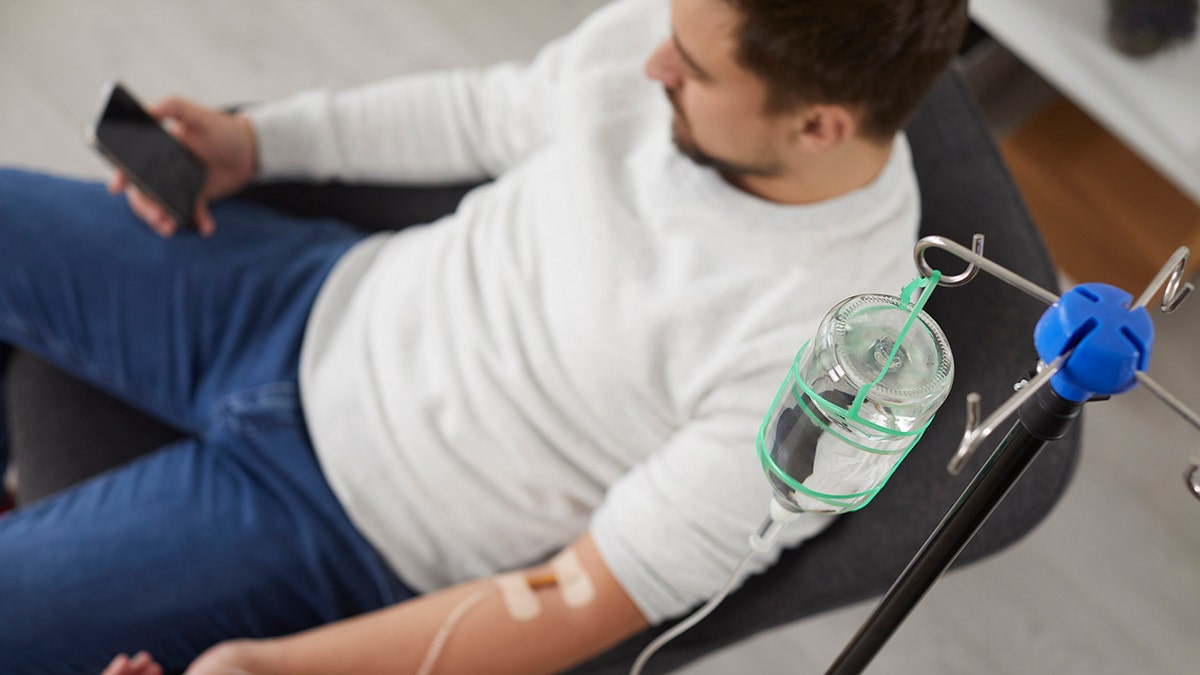Health
Inside the Poisonous Smoke Killing Wildfire Fighters at Young Ages

Across the country, wildfire fighters work for weeks at a time in poisonous smoke.
The government says they are protected.
We tested the air at one fire to find out why they are still dying.
Across the country, wildfire fighters work for weeks at a time in poisonous smoke.
The government says they are protected.
We tested the air at one fire to find out why they are still dying.
It’s July and the Green fire is tearing through Northern California. An elite federal firefighting crew called the La Grande Hotshots has been sent to help. The 24-person crew has been working for days on the front lines, where invisible toxins hide in the thick haze.
More than 1,000 firefighters are on the fire. Several crews, including the La Grande Hotshots, are trying to contain the flames by building a trench of bare earth that will stretch from a road to a river bank. They’re doing this at night, in hopes that the cooler air will tamp down the smoke.
The crew knows that they’re risking their health.
One longtime member died last year after being diagnosed at 40 with brain cancer. A former crew leader is being treated for both leukemia and lymphoma diagnosed in his 40s. Another colleague was recently told that he has the lungs of a lifelong chainsmoker.
Wildfire fighters nationwide are getting sick and dying at young ages, The New York Times has reported. The federal government acknowledges that the job is linked to lung disease, heart damage and more than a dozen kinds of cancer.
But the U.S. Forest Service, which employs thousands of firefighters, has for decades ignored recommendations from its own scientists to monitor the conditions at the fire line and limit shifts when the air becomes unsafe.
To find out how harmful the air gets on an average-size wildfire, Times reporters brought sensors to the Green fire this summer. We tracked levels of some of the most lethal particles in the air, called PM2.5, which are so tiny that they can enter the bloodstream and cause lasting damage.
Readings above 225.5 micrograms per cubic meter are considered hazardous. On the fire line, levels regularly exceeded 500.
The fire began on July 1 after a lightning storm passed over the Shasta-Trinity National Forest.
By July 16, much of the area was shrouded in smoke.
Around 6 p.m., the La Grande Hotshots started their shift and set off toward the fire line.
Capt. Nick Schramm, a crew leader, assumed the air was reasonably safe. He has done this work for nearly two decades, and like most firefighters, he often has coughing fits after long shifts. But he believes that exposure to hazardous air is unavoidable.
“That’s just the harsh truth,” he said later.
As climate change makes fire seasons worse, several states have tried to shield outdoor workers from wildfire smoke, which can contain poisons like arsenic, benzene and lead. California now requires employers to monitor air quality during fires, and to provide breaks and masks when the air turns unhealthy.
But these rules don’t apply on the wildfires themselves, because state agencies and private companies successfully argued that those constraints would get in the way of fighting fires.
Until recently, federal firefighters weren’t even allowed to wear masks on the job. Masks are now provided, but they are still banned during the most arduous work, closest to the fire. The Forest Service says face coverings could cause heatstroke, though wildland firefighters in other countries regularly use masks without this problem.
As crews descended the ridge toward the fire line, the levels of toxic particles nearly doubled.
Firefighters say that during their shifts they worry more about immediate dangers — falling trees, burns, sharp tools — than about smoke exposure. As the La Grande crew hiked down the steep terrain, Lily Barnes, a squad leader, concentrated on keeping her footing.
Back home in the off-season, she sometimes wonders what the smoke is doing to her body, she said in an interview. “Maybe I’ll realize one day I shouldn’t have been doing this work.”
The handbook issued to Forest Service crews has 10 words of guidance for smoke exposure on the fire line: “If needed, rotate resources in and out of smoky areas.” The agency declined to comment for this story, but in the past has told The Times that while exposure cannot be completely eliminated, rotating crews helps limit risk.
In practice, according to interviews with hundreds of firefighters, workers feel as though they are sent into smoke and then forgotten. Over months of reporting, Times journalists never saw a boss pull a crew back because of exposure.
Even experienced supervisors can’t tell exactly how unhealthy the air is just by looking.
Chuy Elguezabal, the La Grande superintendent, says he pulls his crews out of smoke when it becomes impossible for them to work — when they cannot see or breathe, or they are overcome by headaches and coughing fits.
On the Green fire, he said, the smoke seemed like more of an inconvenience, like the 105-degree daytime heat or the poison oak that had given many of the firefighters weeping sores.
Since the 1990s, Forest Service researchers have suggested giving crews wearable air sensors, but the agency hasn’t done it. Other dangerous workplaces, like coal mines, have long been required to monitor airborne hazards.
On the Green fire, The Times used a device that weighs as much as a deck of cards and costs about $200.
Last year, firefighters wore the same devices during a small federal research project to measure their exposure. For hours, those readings stayed at 1,000 — as high as the monitors go — according to Zach Kiehl, a consultant who worked on the project.
Mr. Kiehl said that ideally, crews would be issued monitors to know when to put on masks or pull back from a smoky area. “You can pay now and prevent future cases, or pay out later when a person is losing a husband or a father,” he said.
The firefighters believe that the decision to work at night has paid off: The smoke occasionally got thick, but didn’t seem bad compared with other fires they have worked. They think the exposure was fleeting.
In fact, the monitors show, the air was never safe.
Methodology
To measure particulate concentrations at the Green fire, The Times followed U.S. Forest Service crews and carried two Atmotube PRO sensors. These portable, inexpensive monitors are the same as those the Forest Service has tested in the field.
We consulted with Dr. Aishah Shittu, an environmental health scientist, and Dr. Jim McQuaid, an atmospheric scientist, both from the University of Leeds. They are co-authors of a study showing that Atmotube Pro sensors demonstrated good performance for measuring fine particulate matter concentrations despite being a fraction of the size of reference-grade models. We also developed our approach in consultation with experts from the Interior Department and the Forest Service.
On the Green fire, the sensors recorded minute-by-minute averages of airborne particles that are 2.5 micrometers in diameter or smaller. The Times then matched these readings with timestamps and locations from a satellite-enabled GPS watch.
Generally, the harm associated with PM2.5 levels is calculated based on a 24-hour average. Here, for near-real-time monitoring on the fire line, we followed the guidance of Drs. Shittu and McQuaid by first averaging the readings from the two sensors and then calculating a 15-minute rolling average.
Using those figures, we categorized the health risks of PM2.5 exposure according to standards set by the U.S. Environmental Protection Agency. We used standards meant for the public because there are no federal occupational standards for wildfire smoke exposure.
After averaging, our data had a correlation coefficient of 0.98 and a mean coefficient of variation between the two sensors of 7.5 percent. The E.P.A. recommends that PM2.5 air measurements have a correlation coefficient of at least 0.7 and a mean coefficient of variation less than 30 percent. Our correlation and variance measures gave us confidence that the sensors were largely in agreement.
The 3-D base map in this article uses Google’s Photorealistic 3D Tiles, which draw from the following sources to create the tiles: Google; Airbus; Landsat / Copernicus; Data SIO, NOAA, U.S. Navy, NGA, GEBCO; IBCAO.

Health
‘Skinny fat’ warning issued as study finds hidden obesity behind normal BMI

NEWYou can now listen to Fox News articles!
For decades, BMI (body mass index) has been the go-to number doctors use to decide whether someone is underweight, “normal,” overweight or obese.
But new global research suggests it’s possible to have a normal BMI, look thin in clothes and still meet the medical definition of obesity.
A large study published in JAMA Network Open based on World Health Organization (WHO) survey data examined health data from more than 471,000 adults across 91 countries.
RESEARCHERS SAY BEING ‘FAT BUT FIT’ COULD BE LESS DEADLY THAN BEING UNDERWEIGHT
The researchers looked at people whose BMI fell in the normal range (18.5–24.9) but who carried extra fat around their midsection, measured by waist circumference.
The results showed that roughly 1 in 5 people with a normal BMI had abdominal obesity, a large waistline linked to serious health risks.
Many people who appeared thin still met criteria for obesity, the study found. (iStock)
These so-called “skinny fat” individuals weren’t necessarily healthy just because the scale said they were.
Compared to people of normal BMI and smaller waists, those with belly fat had 29% higher odds of high blood pressure and 81% higher odds of diabetes. They were also significantly more likely to have unhealthy cholesterol and triglyceride levels.
CLICK HERE TO DOWNLOAD THE FOX NEWS APP
In short, their metabolism looked more like that of people with obesity, even if their weight didn’t.
The findings seem to expose a blind spot in how obesity is measured. BMI only considers weight and height but says nothing about where fat is stored.
CLICK HERE TO SIGN UP FOR OUR HEALTH NEWSLETTER
Fat that sits deep in the abdomen and surrounds vital organs is particularly dangerous, fueling inflammation, insulin resistance and cardiovascular problems, according to experts. Someone can be “thin outside, fat inside,” a concept the researchers call TOFI.

Compared to people of normal BMI and smaller waists, those with belly fat had 29% higher odds of high blood pressure and 81% greater risk of diabetes. (iStock)
Lifestyle also plays a role, the researchers noted. People with normal BMI who had belly fat were more likely to be inactive, eat fewer fruits and vegetables and have desk jobs or unemployment.
That combination of little muscle and lack of movement makes it easier to accumulate visceral fat even without gaining much overall weight.
TEST YOURSELF WITH OUR LATEST LIFESTYLE QUIZ
The latest research suggests that waist size may be just as important to track as weight.
For most adults, a waist above roughly 32 inches for women or 37 inches for men signals excess abdominal fat and higher health risks.

People with normal BMI who had belly fat were more likely to be inactive, eat fewer fruits and vegetables, and have desk jobs or unemployment. (iStock)
The researchers noted several limitations. Because the study was cross-sectional, it can’t prove cause and effect, only associations.
CLICK HERE FOR MORE HEALTH STORIES
Data also came from many countries and time periods, and high-income nations were underrepresented, which may affect how widely the results apply.
The study didn’t include actual body fat scans and instead depended on people’s own reports about their habits, which can make the results less reliable. However, the WHO’s survey methods are generally well-validated.
Health
Approaches Women Used to Triumph Over Weight Struggles

Use left and right arrow keys to navigate between menu items.
Use escape to exit the menu.
Sign Up
Create a free account to access exclusive content, play games, solve puzzles, test your pop-culture knowledge and receive special offers.
Already have an account? Login
Health
‘Fountain of youth’ molecule could promote healthy aging and slow diseases

NEWYou can now listen to Fox News articles!
A small molecule has been hailed as potentially promoting longevity and combating certain diseases — but experts are also calling for more research.
NAD+ (Nicotinamide adenine dinucleotide) — often nicknamed the “fountain of youth” — is a coenzyme that is essential for cellular survival, which naturally declines with age. In recent years, supplements designed to boost NAD+ levels have grown in popularity.
Last month, researchers led by the University of Oslo reviewed preclinical and clinical studies investigating the link between NAD+ and aging.
NEW VITAMIN COMPOUND SHOWS PROMISE FOR REVERSING ALZHEIMER’S DAMAGE TO THE BRAIN
The review, which was published in the journal Nature Aging, concluded that restoring NAD+ levels could help to promote healthy aging and potentially slow or treat neurodegenerative diseases.
Every cell in the body contains NAD+, which plays a “critical role” in body functions that are essential to survival.
NAD+, a small molecule, has been hailed as potentially promoting longevity and combating certain diseases. (iStock)
Previous research has shown that patients with Alzheimer’s disease exhibit “notably low levels” of NAD+, the researchers noted — which aligns with the fact that NAD+ declines with age.
“NAD+ may hold the key to healthier aging and could protect us against diseases like Alzheimer’s disease and Parkinson’s disease,” said Evandro Fei Fang-Stavem, an associate professor at the University of Oslo, in a press release. “However, we need further research on how to effectively utilize NAD+ in patient treatment.”
Benefits of NAD+
Research has shown that boosting NAD+ can improve mitochondrial and stem cell function, improve energy metabolism, enhance focus and mood, and support tissue repair, according to Dr. Amanda Kahn, a board-certified internist and longevity expert in New York City.
“From a longevity standpoint, NAD+ is one of the most central molecules in maintaining youthful cellular function,” she told Fox News Digital. “It activates … longevity pathways that protect against DNA damage and inflammation.”
ONE OVERLOOKED DAILY HABIT COULD SLOW THE AGING PROCESS, RESEARCHERS SAY
Boosting NAD+ also supports neuroprotection from Alzheimer’s and Parkinson’s, enhances insulin sensitivity, reduces inflammation, repairs skin, boosts immune defense and improves symptoms in long COVID patients, Kahn added.

While NAD+ itself is a large molecule that can’t cross into cells, NAD+ “precursors” can enter cells and then work to create NAD+. (iStock)
Dr. Halland Chen, a double board-certified physician in New York who specializes in longevity, reiterated that studies in both animals and early human models show that maintaining healthy NAD+ levels can improve energy metabolism, cognitive function and overall vitality.
“Restoring NAD+ is ultimately about cellular repair and mitochondrial optimization, not just an energy boost,” he told Fox News Digital. “Clinical experience shows that NAD+ therapy enhances energy, focus and endurance, while supporting detoxification and reducing oxidative stress from daily life, travel or poor sleep.”
COMMON DAILY VITAMIN SHOWN TO SLOW AGING PROCESS OVER FOUR-YEAR PERIOD
NAD+ also activates sirtuins, a group of longevity-related proteins that regulate DNA repair, cellular stress responses and gene expression, Chen said, although he noted that larger human studies are still needed.
Methods of boosting NAD+
In clinical studies, patients with age-related diseases have taken compounds designed to boost NAD+.
While NAD+ itself is a large molecule that can’t cross into cells, NAD+ “precursors” can enter cells and then work to create NAD+, experts confirm.
These precursors include nicotinamide riboside (NR) and nicotinamide mononucleotide (NMN). Most people take these NAD+ precursors in the form of pills, capsules or powders.
“Clinical experience shows that NAD+ therapy enhances energy, focus and endurance while supporting detoxification.”
“Oral NAD precursors can modestly raise NAD+ levels and are convenient for daily maintenance,” Khan said. “In contrast, injections or IV infusions bypass the gut and deliver NAD+ directly into circulation, leading to more rapid and noticeable effects on energy, focus and recovery.”
Khan also prescribes a weaker NAD+ nasal spray for patients who can’t tolerate needles, though she said the benefits are typically less pronounced.
COMMON VITAMIN SHOWN TO SLASH SKIN CANCER RISK IN SOME GROUPS, STUDY SUGGESTS
“In general, I find that combining daily oral precursors with weekly NAD+ injections offers the most comprehensive support for both intracellular and extracellular NAD stores,” she advised.
Chen noted that oral supplements are best for maintenance, while IV therapy is often chosen for a “rapid cellular reboot, post-travel recovery or enhanced performance.”
“Sessions typically last two to four hours and are administered as a series of three infusions within seven to 10 days, followed by monthly maintenance.”

A doctor noted that oral supplements are best for maintenance, while IV therapy is often chosen for a “rapid cellular reboot, post-travel recovery or enhanced performance.” (iStock)
NAD+ therapy tends to have the most benefit for those managing fatigue, metabolic dysfunction or neurological decline, as well as anyone seeking to enhance energy, focus and recovery, Chen said.
“In healthy adults, benefits are typically modest, but can be amplified when combined with optimized nutrition, exercise and sleep,” he added.
Risks and caveats
While NAD+ therapy is generally safe and well-tolerated, it can cause some mild side effects, according to Chen.
CLICK HERE TO DOWNLOAD THE FOX NEWS APP
“Headache, nausea or chest tightness can occur, especially during faster IV infusions, and typically resolve when the rate is slowed,” Chen, who is also chief medical innovation officer at the digital wellness platform Eden, told Fox News Digital.

“Injections or IV infusions bypass the gut and deliver NAD+ directly into circulation, leading to more rapid and noticeable effects on energy, focus and recovery,” a doctor said. (iStock)
“Most reactions are transient and self-limited, and therapy is considered safe under medical supervision,” the doctor added.
He advises caution for people with active liver or kidney disease, those with a personal or family history of cancer, and women who are pregnant or breastfeeding.
CLICK HERE TO SIGN UP FOR OUR HEALTH NEWSLETTER
Kahn noted that common side effects include mild redness, itching or tenderness at the injection site, “which is harmless and dissipates quickly.”
“Some patients notice a transient rush, lasting no more than 10 minutes, after taking an NAD+ injection due to a brief release of adrenaline and mitochondrial ATP,” she went on. “While not dangerous, it can feel uncomfortable if not anticipated.”
“If the core pillars — sleep, movement, nutrition, metabolic balance and stress regulation — are not in place, NAD+ therapy won’t deliver its full potential.”
When choosing a NAD+ product, quality matters more than quantity, according to multiple experts.
“Patients should look for clinically validated, third-party-tested formulations and start with lower doses to gauge tolerance,” Chen said.
NAD+ therapy isn’t a shortcut to health and longevity in and of itself, but one layer of a much larger foundation, according to the expert.
TEST YOURSELF WITH OUR LATEST LIFESTYLE QUIZ
“If the core pillars — sleep, movement, nutrition, metabolic balance and stress regulation — are not in place, NAD+ therapy won’t deliver its full potential,” he said. “It’s like pouring premium fuel into an engine that hasn’t been maintained — the energy source is there, but the system isn’t optimized to use it.”

NAD+ therapy isn’t a shortcut to health and longevity in and of itself, but one layer of a much larger foundation, according to experts. (iStock)
It’s important to speak with a doctor before starting a NAD+ regimen, experts agree.
“Your doctor needs to know about all supplements you plan to take, including NAD+, because it has strong biological effects,” Chen said. “Your doctor will evaluate your personal health risks and check your medications for potential interactions with NAD+ supplements.”
CLICK HERE FOR MORE HEALTH STORIES
Khan noted that because NAD+ interacts with metabolic and cellular pathways, dosing and timing should be individualized — “especially for those with cancer history, metabolic conditions or multiple medications.”
“A physician should help determine the appropriate delivery method, duration and monitor for response and tolerance,” she said.
-

 New York6 days ago
New York6 days agoVideo: How Mamdani Has Evolved in the Mayoral Race
-

 World1 week ago
World1 week agoIsrael continues deadly Gaza truce breaches as US seeks to strengthen deal
-

 News1 week ago
News1 week agoVideo: Federal Agents Detain Man During New York City Raid
-

 News1 week ago
News1 week agoBooks about race and gender to be returned to school libraries on some military bases
-

 Technology1 week ago
Technology1 week agoAI girlfriend apps leak millions of private chats
-

 Politics1 week ago
Politics1 week agoTrump admin on pace to shatter deportation record by end of first year: ‘Just the beginning’
-

 Business1 week ago
Business1 week agoUnionized baristas want Olympics to drop Starbucks as its ‘official coffee partner’
-

 News1 week ago
News1 week agoTrump news at a glance: president can send national guard to Portland, for now














